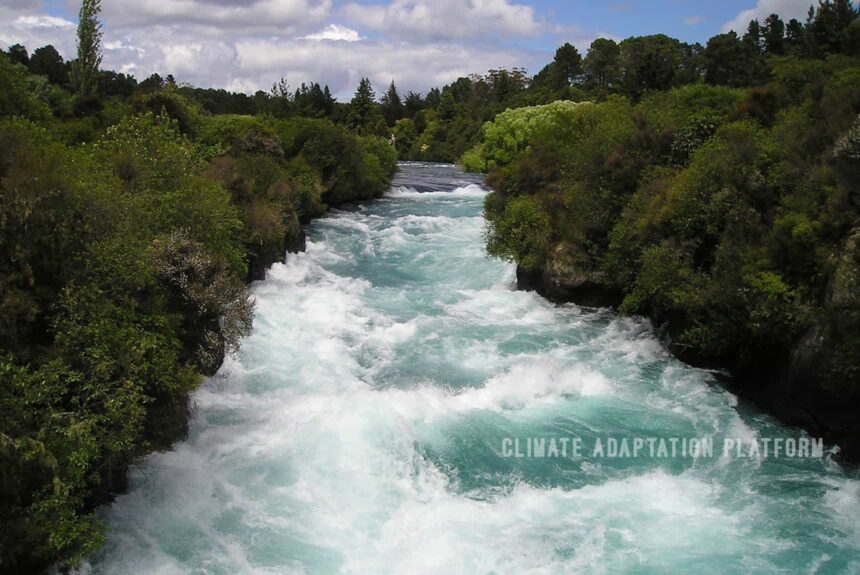Since time immemorial, humans have attempted to control the river, how and where it flows.
Damming is just one of the many ways humans have modified the physical environment, including clearing land for agriculture. The ancient Mesopotamians built dams to provide farmers with a steady source of irrigation for their crops, allowing them to feed a growing population. But damming streams to store and divert water impedes river connectivity, which is critical to maintaining a healthy ecosystem.
Engineers started to build bigger dams during the Industrial Revolution to harness the mechanical power created by the force of flowing water to power factories and mines.
In the United States, the marvel of modern engineering has allowed the US Army Corps of Engineers to build four massive concrete and steel structures to control the flow of the Mississippi River, chaining to its current channel and preventing it from carving a new path to the Gulf of Mexico – that is flowing to the Atchafalaya rivers instead, a shorter and much steeper route to the Gulf.
If not for the Old River Control Structure to keep it at bay, or if the structure fails to divert the flow to the Atchafalaya would mean a significant economic loss to New Orleans, Baton Rouge, and the critical industrial corridor between them, costing $295 million per day because a considerable portion of imports and exports ships along the Mississippi River (Masters, 2019).
As rivers and streams tend to meander and shift over time, humans have attempted to control where and how rivers should flow, have caused unexpected consequences. As a result, there has been extensive research on quantifying and predicting river characteristics like stream flow, sediment transport, and channel morphology and stability (Wohl, 2019).
But scientists and society often need to be made aware of the long-term effects and consequences of human attempts to tame the rivers to which dams, an estimated 2.8 million of them worldwide, are the main culprit in controlling water flow and trapping sediments.
The video below provides an easy-to-understand explanation of how river systems work in real life and the intersection between human engineering attempts to control how river flows and the dynamics of the river system.
Climate change is only going to make things worse in the coming years.
For example, the Mississippi River floods in 2019 have dealt a huge economic blow to 19 states from property and crop losses, infrastructure damages, and interruption to commercial navigation on the river.
The 2019 flood is the second highest on record in terms of duration and total volume, and while the structure Old River Control Structure (ORCS) is built to withstand the unusual stresses from floods, the increasing frequency and severity of extreme weather events from climate change pose a threat to the long-term survival of these massive structures.
The American Rivers article “Give Rivers Room” states that the great flood of 2019 could be just the beginning of more flooding events in the coming years due to climate change.
Dorothy (2019) explains that the only way forward is a massive shift in how we manage rivers. Grey infrastructure could fail and will only make matters worse (Dorothy, 2019).
Dorothy (2019) emphasized that we should give room for the river and help people escape harm’s way; river management should work with nature and not against it.
Sources:
Masters, J. (2019, May 10). America’s Achilles’ Heel: the Mississippi River’s Old River Control Structure. Weather Underground. Retrieved from https://www.wunderground.com/cat6/Americas-Achilles-Heel-Mississippi-Rivers-Old-River-Control-Structure
Wohl, E. (2019, July 8). Forgotten Legacies: Understanding Human Influences on Rivers. EOS. Retrieved from https://eos.org/features/forgotten-legacies-understanding-human-influences-on-rivers
Thompson, A. (2019, August 1). Humans Have Significantly Interrupted the Free Flow of Rivers. Scientific American. Retrieved from https://www.scientificamerican.com/article/humans-have-significantly-interrupted-the-free-flow-of-rivers/
Dorothy, O. (2019, June 12). Give Rivers Room. American Rivers. Retrieved from https://americanrivers.medium.com/give-rivers-room-5941fc6c4b71
Why Engineers Can’t Control Rivers (5 April 2023). Practical Engineering. [Video file]. Retrieved from https://www.youtube.com/watch?v=vLZElIYHmAI



Leave a Reply